If a failure or incorrect operation of the coolant temperature sensor occurs, it will be difficult to start the engine in the cold season
You have to warm up the engine by maintaining speed with the accelerator pedal.
When overheating occurs, power decreases significantly and detonation occurs.
Removing and checking the coolant temperature sensor
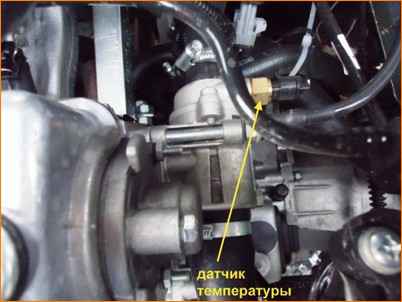
Drain the coolant. You don’t have to drain all the liquid, but drain about 3 liters.

Release the clamp of the wiring harness block, disconnect the block from the sensor.
Connect the negative probe of the voltmeter to the engine ground.
With the ignition turned on, use a voltmeter to measure the voltage at terminal 1 of the wiring harness block (the terminal designations are marked on the wiring harness block).
The voltage at the output must be at least 12 V.
If the voltage does not reach the block or it is less than 12 V, it means that the battery is discharged, the power circuit is faulty, or the ECU is faulty.
When you finish measuring the voltage, turn off the ignition.
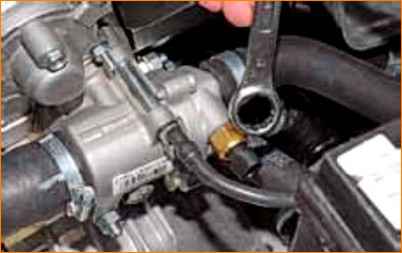
Use a 19 mm spanner to unscrew the temperature sensor
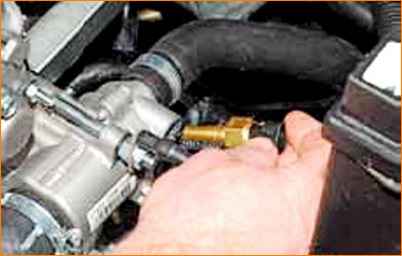
Remove the sensor from the thermostat housing.
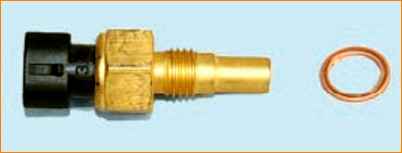
The connection between the sensor and the thermostat is sealed with a copper washer.
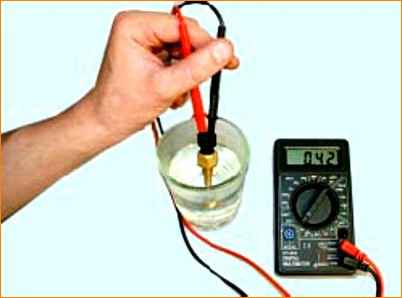
Connect an ohmmeter to the sensor terminals.
To connect a multimeter, you can put pieces of polyvinyl chloride tube onto the sensor terminals.
Insert the probes of the device into them; this must be done carefully, since the sensor leads are very thin.
Fill the container with boiling water, immerse the working part of the sensor in water and record the readings of the device.
As the water cools, we measure the resistance of the sensor at different temperatures.
If conditions permit, readings can be taken at a lower temperature.
The resistance of a working sensor is approximately as shown in the table:
Coolant temperature (°C) - Resistance, Ohm:
- - 100 - 175;
- - 90 - 240;
- - 40 - 1460;
- - 10 - 5670;
- - 0 - 9420
We replace the faulty sensor.
Installing a temperature sensor
Install the sensor in the reverse order of removal.
Fill the engine cooling system with liquid.
Start the engine and make sure there are no coolant leaks from under the sensor.
If necessary, tighten the sensor into the thermostat housing.
If it was not possible to eliminate the leak in this way, you should reinstall the sensor by applying a heat-resistant sealant to its threaded part or replace the copper washer.





